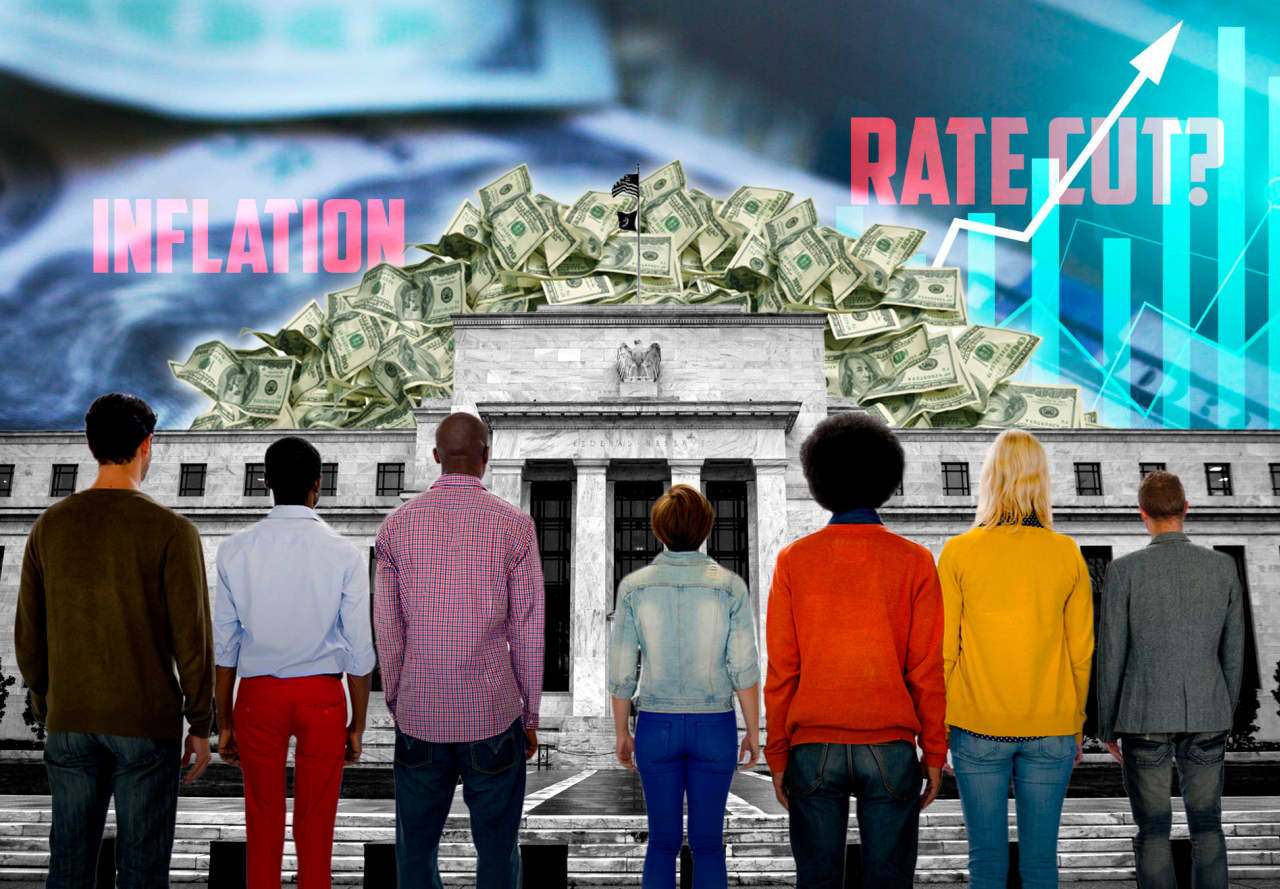The Federal Reserve’s pushback on interest rate cut expectations over the past two weeks has led investors to turn away from watching inflation data and pile more cash into money market funds.
According to Crane Data, investors stashed a record $6.48 trillion in U.S. money market funds through the end of January, with the balance rising as December euphoria over the Fed’s policy shift faded .
Fed Chair Jerome Powell first threw cold water on aggressive rate cut expectations in a late January policy meeting, indicating that a March rate cut was not likely. Days later he followed up with a CBS News “60 Minutes” interview, telling 6.6 million viewers that the central bank would proceed cautiously on rate cuts because inflation has not yet been convincingly tamed .
“It really put a big damper on the situation,” said Deborah Cunningham, chief investment officer, global liquidity market at Federated Hermes, a group that held $560 billion in money market assets as of Dec. 31. “The market outdid itself in November and December.”
Prudent bonds
Previous optimism about lower interest rates, potentially as early as March, has helped U.S. bond funds achieve positive returns in 2023.
However, many benchmark bond indexes slipped back into the red in February, with the 10-year Treasury yield BX:TMUBMUSD10Y rising to 4.186% on Friday, the highest since mid-December.
“The stock market wouldn’t notice, but the bond market is definitely listening to Powell,” said George Catrambone, head of fixed income at DWS Group, in a phone interview.
“Powell took the punch bowl away in January, but it was needed,” he said. “They need to guard against a reacceleration of inflation.”
In this context, Catrambone called next Tuesday’s expected release of the consumer price index for January “the main event” of the week, particularly after January’s strong jobs report and data showing job growth. American economy by 3.3% in the fourth quarter.
See: The first big inflation report of 2024 is about to be released. Here’s what the consumer price index is likely to show.
The seasonally adjusted consumer price index for the fourth quarter came in at 3.3% year-over-year on Friday, underscoring the progress the Fed has made in reducing price pressures from a peak of more than 9% seen this cycle. However, the cost of living remains above the central bank’s 2% target.
“I think the Fed is pleased with the progress they’ve made on inflation so far, but we need to see more,” Catrambone said. Against this backdrop, he remains a proponent of investing in the front end of the Treasury yield curve, particularly with rates on 6-month Treasury bills BX:TMUBMUSD06M above 5% for nearly a year.
“While the bar to be cut is high, the bar to be raised is even higher,” Catrambone said.
Light: Recession fears vanish in new forecasts from top economists
The S&P 500 milestone
Cautious tones in the bond market have been largely absent from US stocks in recent weeks, with the Dow Jones Industrial Average DJIA and the S&P 500 both embarking on record-breaking runs to start 2024, and the Nasdaq Composite Index not far behind.
See also: US stocks just accomplished something that hasn’t happened since 1972
Adam Hetts, global head of multi-asset at Janus Henderson Investors, said staying in cash can be tempting, especially last year when recession worries had been at the forefront for so long.
“Investors now expect a Goldilocks scenario,” Hetts said, a situation in which the economy continues to grow but inflation continues to fall. Along the way, they will likely have to digest “hot and cold economic news.”
“Investors too focused on the recession crystal ball turned to cash, attracted by high rates,” Hetts said. But by avoiding stocks, investors would have missed out on the S&P 500’s roughly 23% rise over the past 12 months, according to FactSet data.
“Liquidity is critical for short-term liquidity needs, but overweight liquidity can be toxic for long-term financial planning,” Hetts said.
To that end, he favors a more traditional 60:40 allocation to stocks and bonds, especially given the higher yields available in intermediate-dated fixed income to offset any turbulence that might erupt in stocks that appear “priced to perfection.” .
The S&P 500 SPX index closed above the 5,000 mark for the first time ever on Friday, gaining 1.4% for the week to close at a record 5,0526.61, according to market data from Dow Jones.
See: The S&P 500 hits 5,000 for the first time. Here’s what it means for the market.
The Dow Jones advanced less than 0.1% on the week, closing at 38,671.69, while the Nasdaq rose 2.3% on the week, closing at 15,990.66, just 0.4% lower compared to its previous record in November 2021, according to Dow Jones Market Data.
Meanwhile, cash parked in money market funds has gained around 5% for many months, helped by 1-month BX:TMUBMUSD01M and 3-month BX:TMUBMUSD03M Treasury bills yielding around 5.38% as of Friday , according to FattoSet.
With the new “reality check” in markets around rate cut expectations this year, Federated Hermes’ Cunningham said getting to a $7 trillion balance for money market funds is not hard to imagine.
Light: Magnificent Seven shares have soared, but it has historically been ‘profitable’ to bet against the bigger stocks
